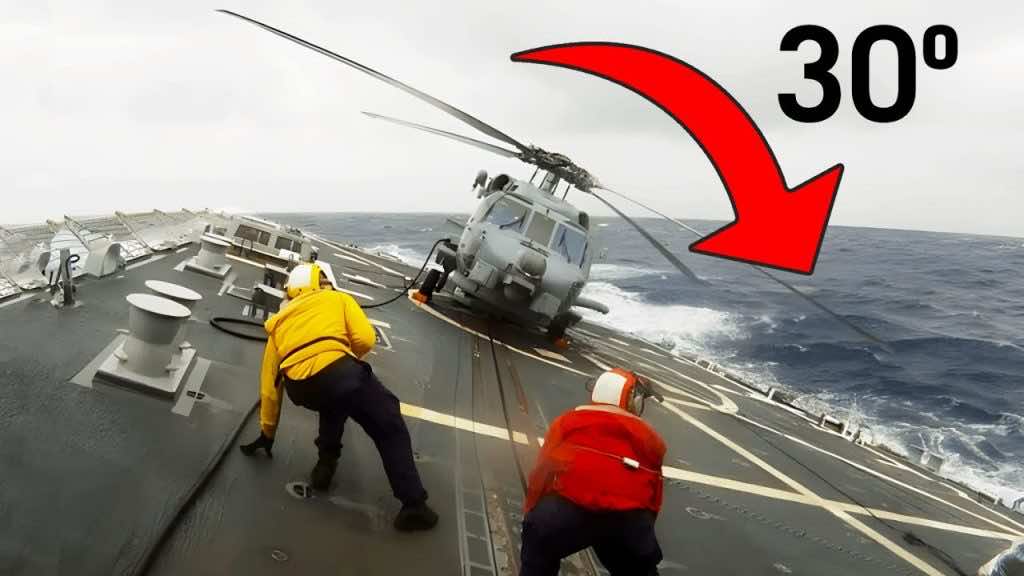The working principles of helicopters are somewhat different than those of modern airliners, especially during the landing and takeoff phases. Both of them can smoothly conduct their operations, but in the situation of bad weather and poor visibility, it would become difficult, especially for helicopters, to take off and land. Modern civil aircraft have ILS (instrument landing system) deployed, which makes it very easy for them to land in extreme weather conditions. However, what about helicopters when they have to land on a small ship deck that is vigorously rolling due to the high sea waves owing to the bad weather?
There is nothing to worry about because modern helicopters are equipped with a special system known as “Helicopter haul down and rapid securing device (HHRSD)”. The system encompasses the rolling of helicopters up to 30 degrees, with 9 degrees of the pitch having a sea state of 6. This is incredible because all this can be done in extreme weather conditions when landing on a trembling ship deck seems impossible. The system is also known as “Beartrap”, and due to this, the helicopter landings in bad weather conditions have become trouble-free.
The working principle of the “beartrap” as depicted in the video is that a probe will become attached to the cable. The cable was then picked up by the flight crew on the ship deck with their hands and became connected with the beartrap enclosed on the ship deck. The automatic hydraulic system controls the tension in the string of the cable. In this way, the ship becomes integrated with the flight deck, and when the pilot sees during landing that the helicopter is now synchronized with the beartrap, that is the time he can actually land.
The system is not only safe for the helicopter but can also move the helicopter in and out of the hangar. However, there is one drawback to using this system, i.e., the risk of men overboard, especially in windy conditions. To mitigate this effect, a new and more advanced system of the beartrap has been developed known as ASIST (Aircraft Ship Integrated Secure and Traverse). It deploys optical positioning technology that automatically monitors the helicopter’s position and control during landing until it becomes completely aligned with the landing area.
The beartrap on the flight deck immediately grips the cable attached to the helicopter, and through this, it can easily land in stormy conditions without the need for any personnel on board. Moreover, this technology will also allow it to pass through the hangar without any manpower. Thus, in this way, modern helicopters can easily land on rough seas without the danger of any equipment or personnel on board.

